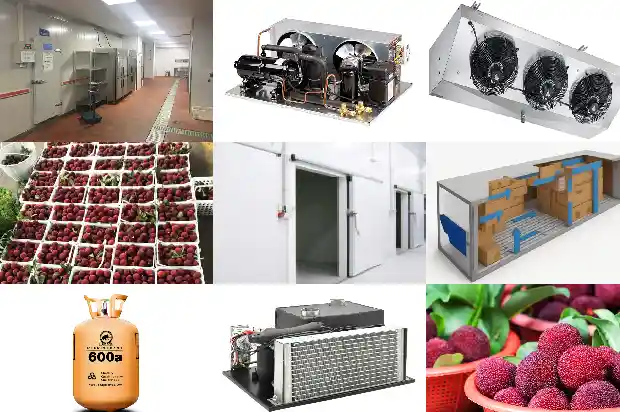In - depth Explanation of Large - temperature - difference Ice - storage Air - conditioning Systems
2025-04-04
An ice - storage air - conditioning system is an air - conditioning system that stores cooling capacity in a certain medium in the form of sensible heat and latent heat and can release the cooling capacity when needed.

Among them, the coil - type and encapsulated ice - storage systems are the most commonly used, accounting for more than 80% of the ice - storage air - conditioning system projects.

In summary, the optimization and solutions of the ice - storage air - conditioning system are as follows:
- Using a variable - frequency centrifugal base - load host can effectively improve energy consumption and achieve energy savings.
- The "large - temperature - difference" screw dual - mode ice - storage system can reduce the cooling supply outlet temperature for ice - making to as low as - 6.5℃. The temperature difference from the ice - forming critical point (- 1.5℃) is ΔT = (- 1.5℃ - (- 6.5℃)) = 5℃. This effectively optimizes the ice - forming rate of the ice - storage device, reduces the amount of residual ice, and directly reduces the installation cost.

- Adopting a partial - ice - storage design to optimize the selection of system equipment. The cost and payback period can be adjusted as needed, increasing flexibility.
For the "large - temperature - difference" ice - storage air - conditioning system, schematic diagrams:
Parallel cooling supply, no temperature - difference shunt, increasing the cost of the host:
Series cooling supply, shunting the temperature - difference zone, saving the cost of the host:
Overall advantages of the "large - temperature - difference" ice - storage air - conditioning system:
Parallel cooling supply, no temperature - difference shunt, increasing the cost of the host:
Series cooling supply, shunting the temperature - difference zone, saving the cost of the host:
Overall advantages of the "large - temperature - difference" ice - storage air - conditioning system:
Related Articles
- Frosting in the Cold Storage? A Detailed Explanation of the 9 Reasons for Frosting of Air Coolers and 4 Defrosting Methods~~
- HVAC - Concise Explanation of Refrigeration Principles
- Detailed Explanation of HVAC Pipeline Integration and Pipe Shaft Layout
- Comprehensive Insights into Large - Temperature - Difference Ice - storage Air - Conditioning Systems
- In Refrigeration Repair, Analyzing and Handling Three Major Series of Malfunctions - "Blockage", "High Pressure" and "High Discharge Temperature" are Essential!
- How Do Pressure and Temperature Affect the Refrigeration System?
- What You Must Know About the Evaporation Temperature of the Refrigeration System!
- Estimation of Temperature and Pressure in the Refrigeration System
- The Influence of Temperature Changes on the Air Conditioning Refrigeration System
- Does a lower evaporation temperature result in a larger refrigeration capacity, or does a higher evaporation temperature lead to a larger refrigeration capacity?
- Cause Analysis of High Discharge Temperature and Overload Protection of Modular Units
- Understand Correctly the Dry-bulb Temperature, Dew-point Temperature and Wet-bulb Temperature
- What Misconceptions Should Be Avoided in Low - temperature Refrigeration System Repairs
- Why Does the Evaporation Temperature of the Refrigeration System Drop Too Low? And Why is the Condensing Pressure Too High?
- Introduction to the Advantages of Dual - temperature Cold Storage
- What are the characteristics of low-temperature cold storage?
- Requirements of Cold Storage Insulation for Maintaining Stable Temperature Inside
- Temperature Gradient Differences between Deep Foundation and Surface of Civil Cold Storage
